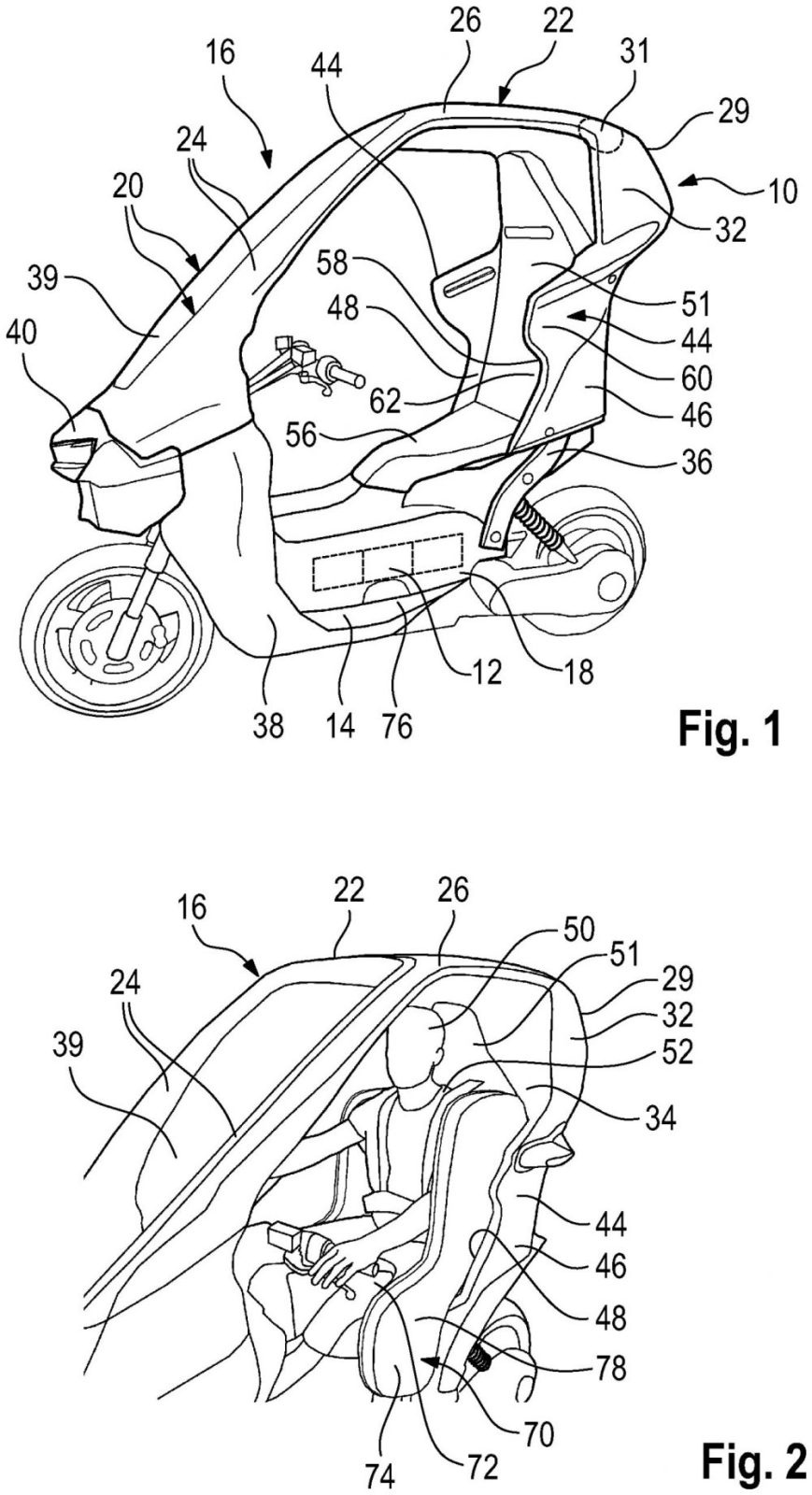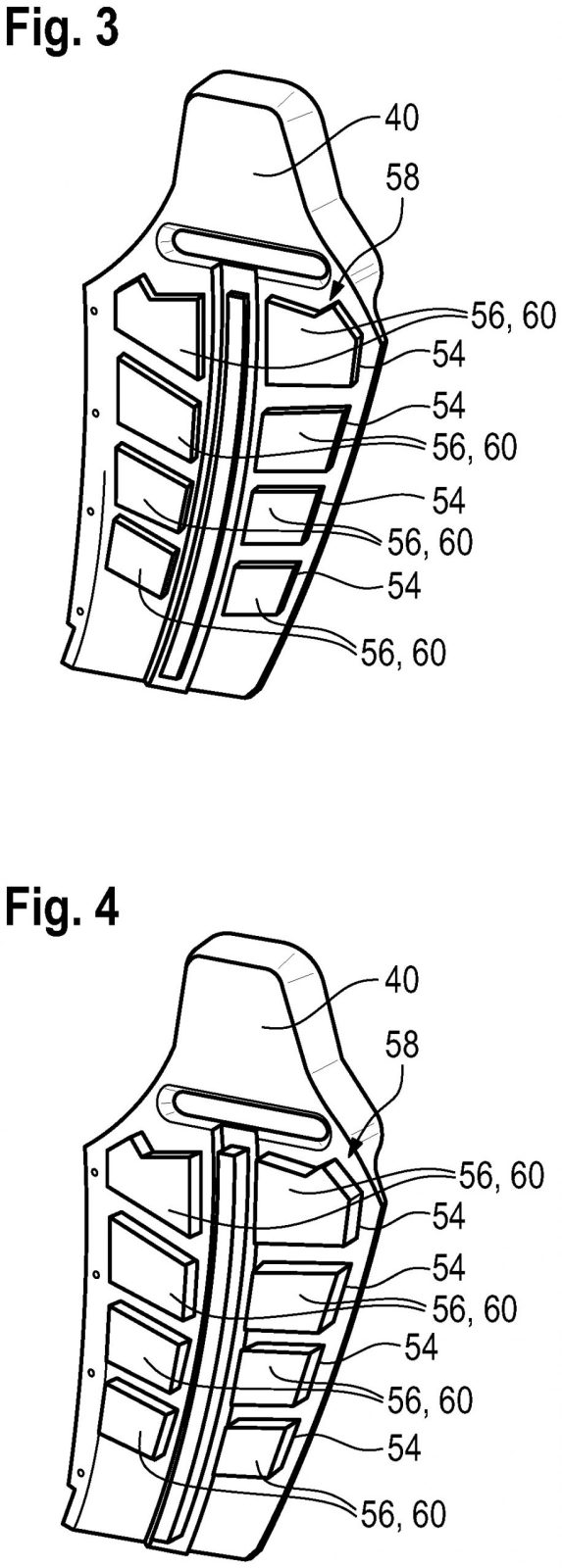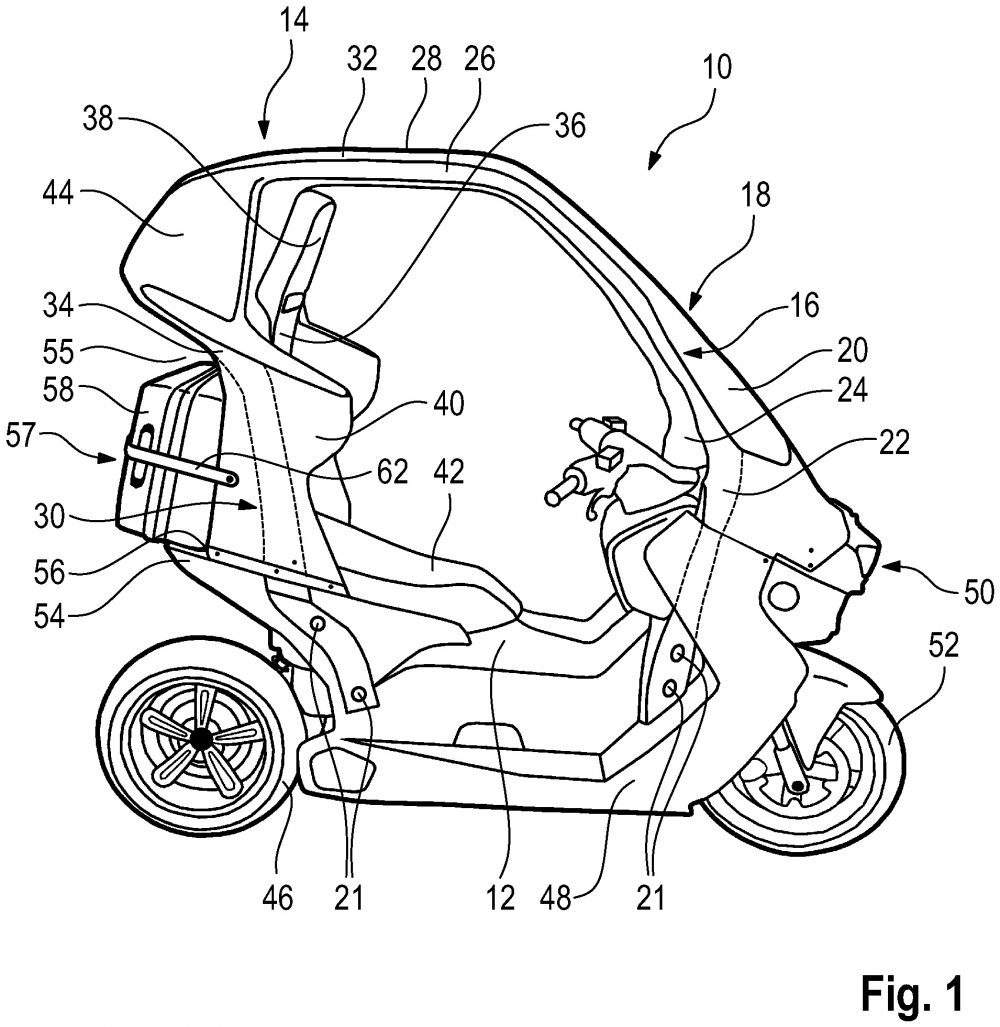Enclosed BMW electric bike on the way with removable safety cell for car-style safety
BMW has filed a massive slew of patent applications around the idea of a roofed electric bike that offers both the shut-in safety of a car and the exposed thrills of a motorcycle.
The bike, which we initially exposed last year when BMW filed an initial patent for the idea, is based on the chassis and powertrain of the C Evolution electric scooter but features a detachable carbon-fibre roof and safety cell. The design means it can be used without protective equipment and with a modicum of weather protection when the roof is fitted, but by undoing a few bolts you can leave the safety cell at home and enjoy a lighter, conventional, open motorcycle.

BMW has been down this road before with the radical C1 scooter, launched in 2000 and withdrawn just two years later in the face of poor sales. That bike, powered by a limp 125cc single-cylinder engine tasked with dragging a hefty 185kg machine around, was hamstrung by its weight and performance as well as a high price compared to conventional scooters. However, by swapping the C1’s aluminium safety cell for a carbon fibre design and making the whole thing removable, BMW appears to have solved the weight problem, and with a torquey electric powertrain performance is less likely to suffer as well.
No fewer than 15 patents were filed around the idea in July, covering a vast array of innovations on the bike. They show that that safety cell is based around two carbon fibre hoops, bolted to the bike at the front and rear via collapsible crash structures. The idea is that the carbon hoops have a modicum of controlled flex to absorb crash forces and the crushable crumple zones they’re bolted to operate as easily-replaced sacrificial members to dissipate energy transmitted to the roof in an accident.

The removable roof structure also incorporates a seat back that contains inertia-reel seatbelts, complete with pre-tensioners, as well as an internal structure to provide protection against rear impacts. On either side there’s a wrap-around section that guards the rider’s shoulders and contains side-mounted airbags that inflate to form curtain-style barriers running from the rider’s head to hips when inflated in an accident, helping ensure arms stay inside the vehicle and acting as further energy-absorbing material.

BMW’s patents go further still, showing practical features including mirrors built into the structural windscreen pillars and an duct that channels air from the nose to the inside of the screen to help ensure it stays mist-free.
And the innovations don’t stop there, as BMW has even added active aerodynamics to the design. Realising that the tall roof structure is likely to act as a sail in side winds, pushing the bike off course, the firm has added four winglets – two at the front and two at the rear – that automatically change their angles to compensate. Controlled via an IMU-based stability system, incorporating yaw-sensors and gyroscopes, the winglets monitor forces trying to push the bike over – like side winds – and move the winglets to push the bike in the opposite direction, acting like the ailerons on an aeroplane to control roll.

It’s all very clever, and no doubt very expensive, but in a world where the Coronavirus pandemic is pushing commuters away from public transport, there are sure to be people looking for a practical alternative to take them from the suburbs to the inner city. With car-style safety and no need to wear protective motorcycle gear, a roofed electric scooter like this could be the perfect solution for commuters who aren’t prepared to put up with the risks and exposure of a conventional bike. Better still, there’s the option of unbolting all the safety kit at weekends or on sunny days to get a lighter, faster and more conventional motorcycling experience.

Words Ben Purvis